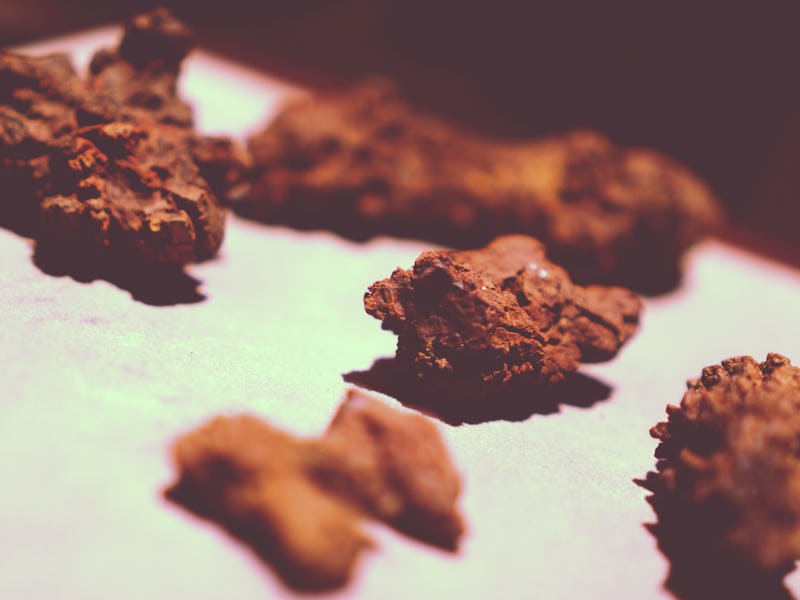Why Scientists are Putting Dinosaur Poop in Particle Accelerators
3D scans of ancient droppings are packed with discoveries.

It’s fair to assume that physicists are normally prohibited from squeezing some poop into their institution’s particle accelerator.
Yet that’s exactly what they did, according to a study published last week in the journal Scientific Reports. The results are making, shall we say, quite a splash. It seems that they get some wiggle room when the poop in question is 250 million years old.
A team of researchers from Sweden’s Uppsala University used the particle accelerator at the Synchrotron Radiation Facility in Grenoble, France, to create high-quality, 3D reconstructions of their samples of fossilized poop, calling the ancient turds coprolites.
While previous scientific expeditions to uncover the makeup of poop – ahem, coprolites — wiped away any delicate remains, the strong beam of the synchrotron particle accelerator provided a never-before-seen glimpse into the diets and habits of Triassic animals.
This elongated, fossilized dookie is full of tiny, delicate insect remains that previously couldn't be seen.
In particular, the two Polish coprolites that the scientists squeezed into the synchrotron were found to contain several bits of fish and insects, which the scientists believe were eaten and dropped by an extinct lungfish, known to be a predator in the area around when these scientific shits were taken.
The Swedish team narrowed down the list of potential poopers by analyzing how tightly coiled the poop was, as well as the nature of its spiral. Most lungfish have tightly coiled, spiraled poopies. But the likely candidate, Ptychoceratodus, made for a potential match to the, as the scientists put it in their paper, “elongated and non-spiral” coprolite, though the other sample “appears to have a spiral morphology consisting of one big coil.”
Because using particle accelerators to scan these ancient poops can provide us with a glimpse into the realm of poop without destroying the sample — not unlike how third graders across the country unquestioningly dissect owl pellets every year in school — researchers can now figure out the food webs of ancient ecosystems better than ever before. By matching poop to predator, then looking to see what they left behind, we can get a better idea of where and how animals used to live, as well as which species ate which.
This ancient, spiral-shaped turd was found to contain fish bones and scales.
Unfortunately, the Swedish team has yet to announce whether they are continuing their investigations, so at this point in time it’s probably still best that you flush.